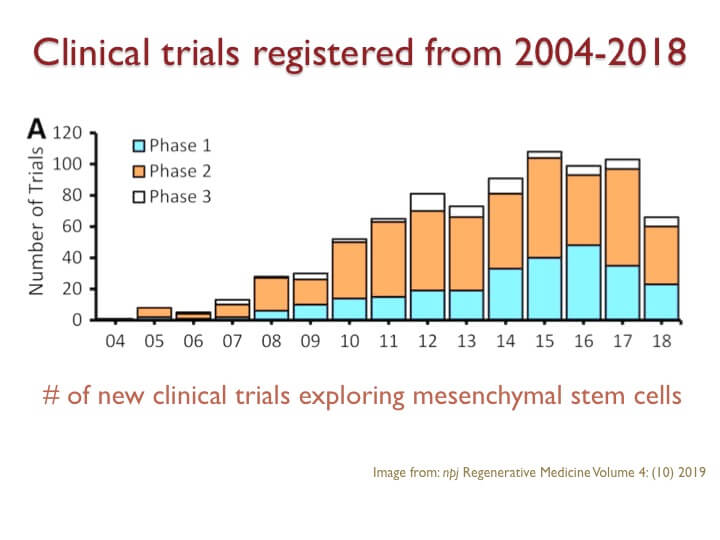Duration
3:45 minutes
Category
Stem cell basics
Series
Cord blood banking
Objective
Educational
An introduction to stem cells
What you will learn
- What are stem cells?
- Diseases currently treated with stem cell therapy
- Difference between cord blood and cord tissue stem cells
- Clinical trails exploring the future potential of stem cells
This article thoroughly explores the domain of stem cells, their practical applications, and the ongoing scientific exploration of their potential in addressing a diverse spectrum of illnesses.

Stem cells, characterized as embryonic cells in their early stages, possess a remarkable capability to transform into various cell types within the body. Among the key sources of neonatal stem cells are cord blood and cord tissue.
Cord blood contains hematopoietic stem cells, which can transform into a wide range of blood cell types. These stem cells are also present in adult bone marrow.
Conversely, cord tissue shelters a unique variety of stem cell known as mesenchymal stem cells. These cells possess the remarkable ability to differentiate into bone, muscle, cartilage, and nerve cells.
Collectively, cord blood and cord tissue house two distinct stem cell types, harboring the potential to cultivate an array of cell types within the body.

For more than sixty years, hematopoietic stem cells have been harnessed in the treatment of diseases. The inaugural stem cell transplant took place in 1957, more than six decades ago, led by E. Donnall Thomas. His pioneering application of cell transplants in combating human diseases secured him the Nobel Prize in 1990.
Currently, hematopoietic stem cells stand as a therapeutic path for more than 80 life-threatening conditions, encompassing cancers, immune system anomalies, blood disorders, and metabolic irregularities.
Stem cell research stands as one of the most rapidly advancing frontiers of scientific exploration. The landscape is dotted with over a thousand clinical trials scrutinizing the potential utilization of both cord blood and cord tissue stem cells in mitigating ailments such as osteoporosis, Alzheimer’s, diabetes, breast cancer, liver failure, and arthritis.
Significant expansion has unfolded across clinical trials, spanning the years from 2004 to 2018.
Focusing on trials involving mesenchymal stem cells, a subgroup found within cord tissue, their number surged tenfold between 2005 and 2015.
When dissecting these trials based on stem cell types and transplantation techniques, both categories of transplants are being pursued with equal enthusiasm.

Particularly captivating is the data concerning stem cell categories. Umbilical cord stem cells emerge as the second most explored category, driven by their potential as future therapeutic agents.
It is reasonable to affirm that scientists have only begun to scratch the surface in terms of conceptualizing innovative treatments for diseases through the application of stem cells.
More topics you might like
Continue your journey by selecting another topic.
Discover more about the placenta, cord blood and cord tissue.
4:00 minutes | Stem cell basics
Understand the different types of stem cell transplants.
5:30 minutes | Stem cell basics
Learn about the exciting new ways stem cells are being explored as a future therapeutic.
5 minutes | Stem cell basics





